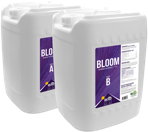Drip Irrigation: Maintenance and Best Practices
Share this Post
WATER QUALITY ASSESSMENT
Water from different sources has broad variability. An irrigation water analysis can determine what components, if any, exist that may present a clogging risk. The presence of suspended solids, high pH, organic matter and hardness drastically increases the chance of irrigation system complications. Poor water quality will also affect nutrient performance and availability to plants.
There are three major causes of clogged lines or emitters:
- Biofilm/algae
- Driven by presence of bacteria or other organic material
- Mineral scale
- Certain chemicals and hard water can cause reactions that form insoluble salt buildup (precipitate)
- This precipitate can form in filters, lines and/or emitters
- Sand/sediment
- Result of improper or inadequate filtration throughout the system or at the water entry point
Table 1. Criteria for plugging potential of drip irrigation via system water source
| PLUGGING HAZARD | |||
|---|---|---|---|
| Factor | Slight | Moderate | Severe |
| Factor | (in parts per million (ppm)* except pH) | ||
| Physical | |||
| Suspended Solids (filterable) | <50 | 50-100 | >100 |
| Chemical | |||
| pH | <7.0 | 7.0-7.5 | >7.5 |
| Manganese | <0.1 | 0.1-1.5 | >1.5 |
| Iron | <0.1 | 0.1-1.5 | >1.5 |
| Hardness | <150 | 150-300 | >300 |
| Hydrogen Sulfide | <0.5 | 0.5-2.0 | >2.0 |
*Some water reports list results as milligrams per liter (mg/L) which is equal to parts per million (ppm)
(Table credit Bill Lamont, Penn State University Extension)
Factors in Table 1 with slight plugging hazard may not need any filtration or other modifications. Moderate to severe hazards do not necessarily deem the water unsuitable, but may require some action prior to using for irrigation.
If suspended solids are high, sand media filters are the recommended choice for both organic and inorganic particle filtration. Moderate to high pH and alkalinity can be adjusted with acid. Water hardness and dissolved iron and manganese can be reduced with potassium-based water softeners, filtration and reverse osmosis. If hydrogen sulfide is high, ion exchange resins, activated carbon filters and sand filters can be used to remediate. Ozone treatment can also be used to disinfect and oxidize water..
Prior to injecting any products into an irrigation system, you must test the stability of your solution. This can be done by mixing 1 gallon of the irrigation water to be used with the recommended rate of nutrients and additives. Be sure to mix well and leave for 24 hours. If any signs of precipitation or cloudiness occur after 24 hours, water filtration and/or pH adjustment may be necessary to avoid clogging.
DRIP IRRIGATION MANAGEMENT
Daily Practices
- Flush plain water through your irrigation system for 30 seconds after each nutrient-rich feeding to remove any residuals from lines
- – Flushing protocols prevent algae buildup and salt formation in lines. If flushing is not done regularly, residual nutrients will remain in the drip lines and accumulate, leaving behind salts and/or organic matter. These accumulations are a major contributor to line and emitter clogs
- Check drip system filter and clean as needed
- – Disc and screen filters are available; disc filters are more resistant to clogging and easier to clean
- Check lines for leaks and repair as needed
- – Always use solid plastic lines, preferably black. The more light that penetrates the lines, the greater the chance of algae formation
Post-Harvest Practices
Between crops, flush lines with acid treatment to dissolve and dislodge any scale or salt buildup. Prior to injecting acid through the irrigation system, verify that the pump and components are acid-resistant. Flush the system thoroughly with water before injecting acid to prevent damage to the system. The recommended concentration of any acid in water is 0.6%, with a pH range in solution of 2.0-3.0. Acids suitable for injection are:
Nitric………………..60%
Sulfuric……………..90-96%
Phosphoric………..75-85%
Hydrochloric………30-35%
CAUTION: When handling acids, make sure that appropriate gloves, goggles and clothes are used. Always add acid to water, not water to acid. Before using acid in an automatic irrigation system, make sure that all parts of the system are compatible with the acid being used.
After flushing the lines with the appropriate acid, clean the filters immediately. Post cleaning, flush the entire system with clean water for at least 1 minute.
To eliminate organic matter from your system, inject sulfuric acid at a pH of 5.0, followed by 50 ppm of chlorine. Allow the solution to sit in your lines overnight and flush thoroughly the next morning
FAQ’S
My emitters have slime in them. What’s going on and how do I fix it?
If nutrient feeds contain organic material, this can attract bacteria if it’s not properly flushed from the lines. Bacteria feeds on organic matter residuals in lines, producing slime that can become a clogging issue. Inclusion of hydrogen peroxide, peracetic acid or a similar product along with the nutrient solution can be an effective practice to prevent organic buildup in lines. Hydrogen peroxide will also oxidize iron and manganese if these are present in your water.
If bacterial or algae slime forms and clogs emitters, a thorough flush of the system is necessary. All emitters must be manually cleared and rinsed well. If filters are clogged with organic material, rinse thoroughly with water and clean with hydrogen peroxide solution. Flush the entire system with chlorine or other sanitizing agents to remove organic matter and allow the flushing solution to sit in the lines for 24 hours (if possible). If using chlorine, make sure to thoroughly flush the lines with plain water before injecting your nutrient solution.
Why do my emitters and/or drip lines have white crust in them?
A pH higher than 6.0, along with a high ppm/EC, can lead to precipitates forming in lines and clogging emitters. Flushing plain water through the system after each nutrient feeding and using acidic nutrients can prevent this buildup. Flushing with acid after each harvest will clear any solid residuals from the lines.
I don’t see any water coming out of my drip emitters. What can I do?
Check in line filters for clogging and sediment and rinse as needed. Rinse filters weekly or more often if needed. Check emitters that aren’t working and go backwards along the line, looking at in-line filters all the way to the injector system.
Use adequate pump pressure capacity for your system’s size to get consistent water pressure coming out of all emitters. This can help to prevent clogs caused by organic and inorganic material.
For further questions or troubleshooting inquiries, please contact:
Shara Finch
Rx Green Technologies Research and Development

